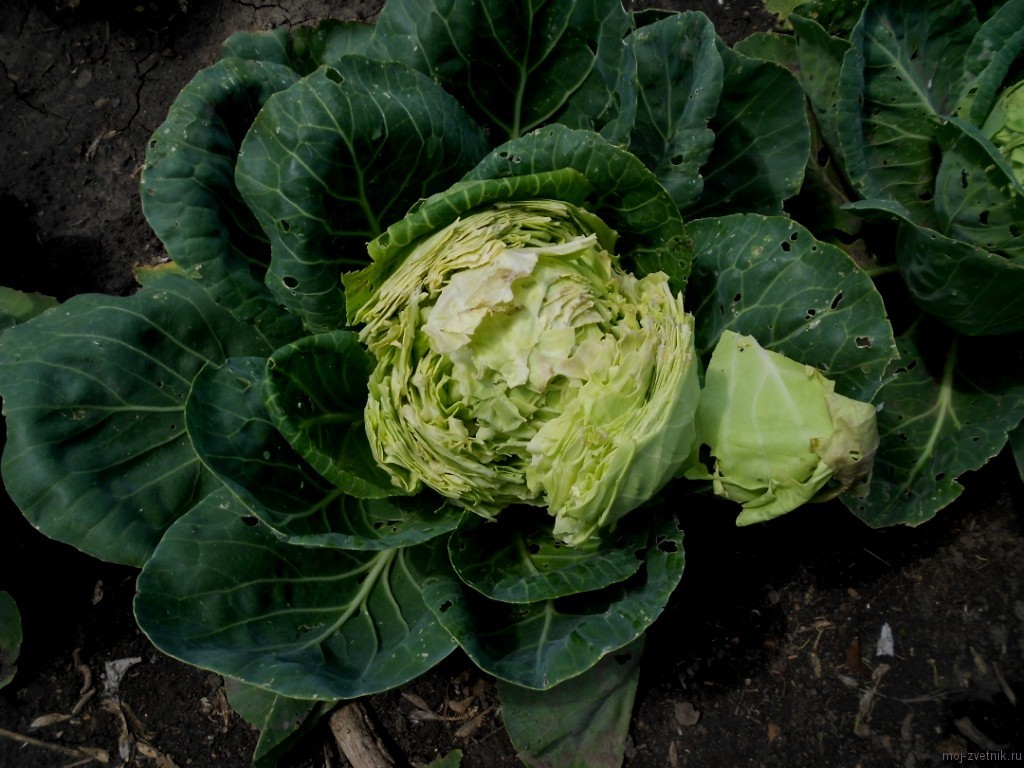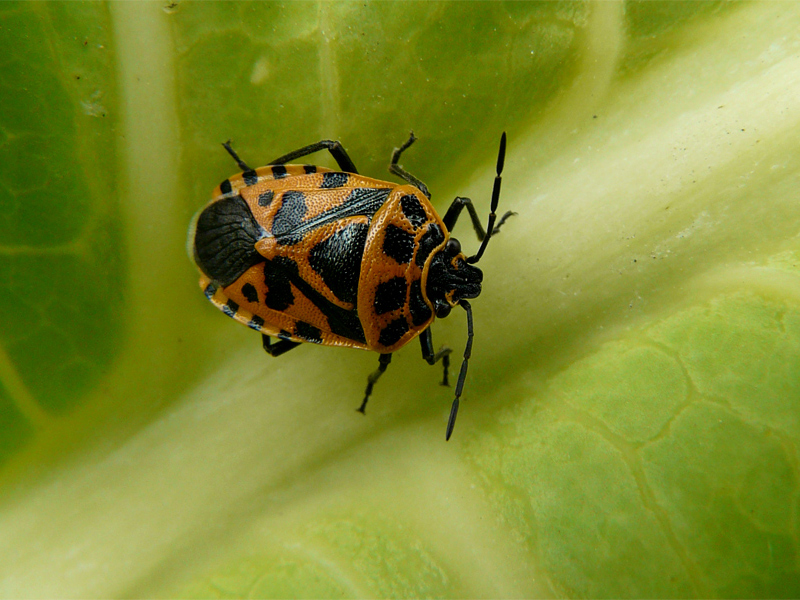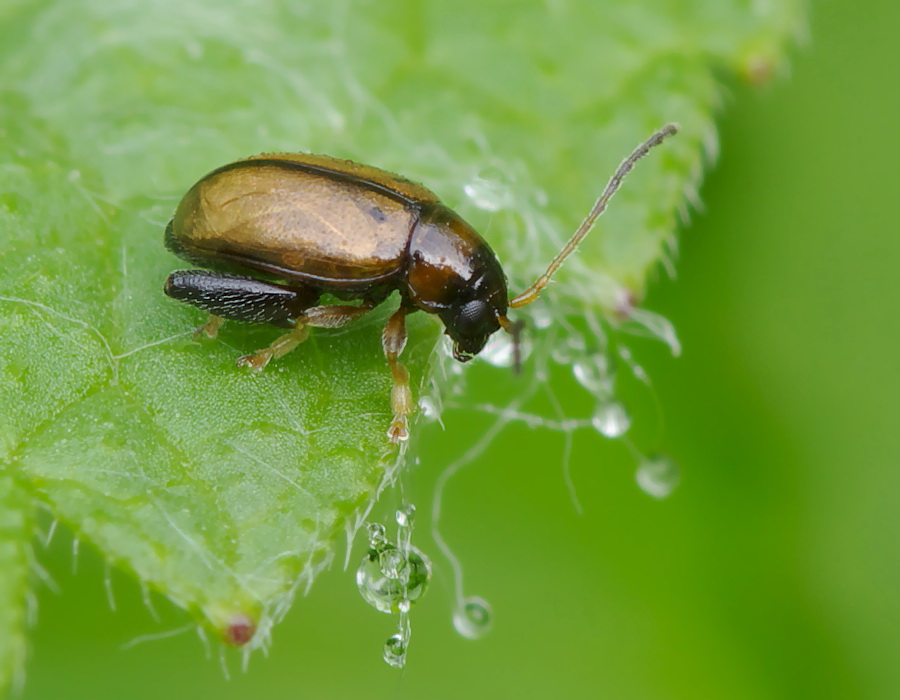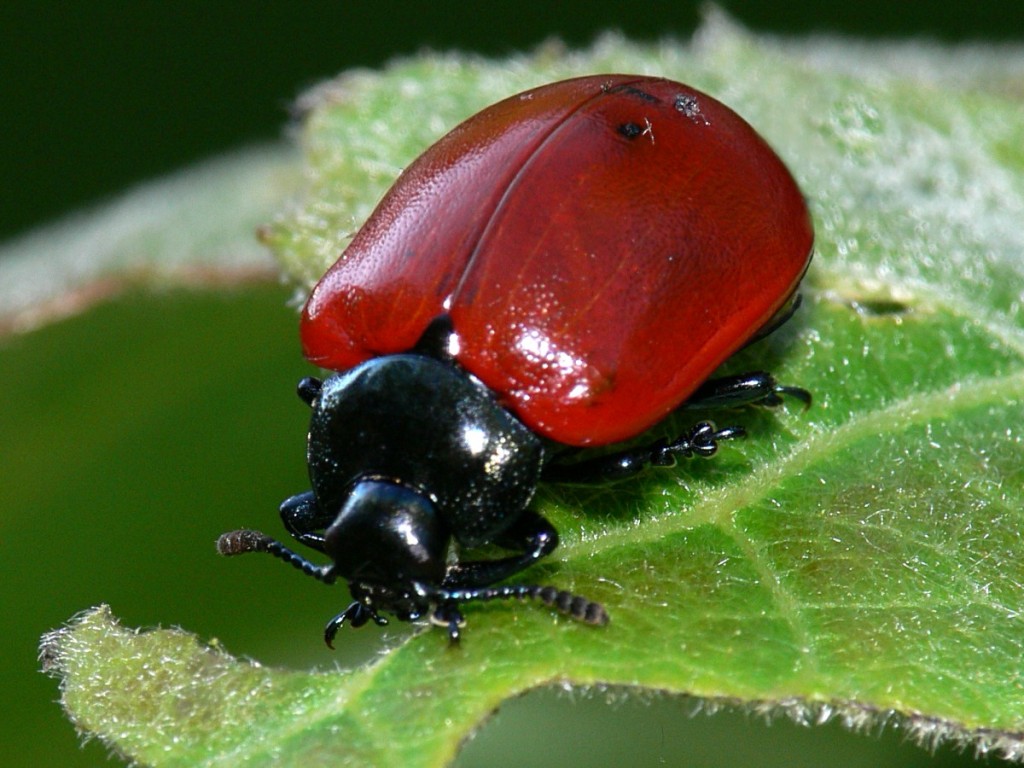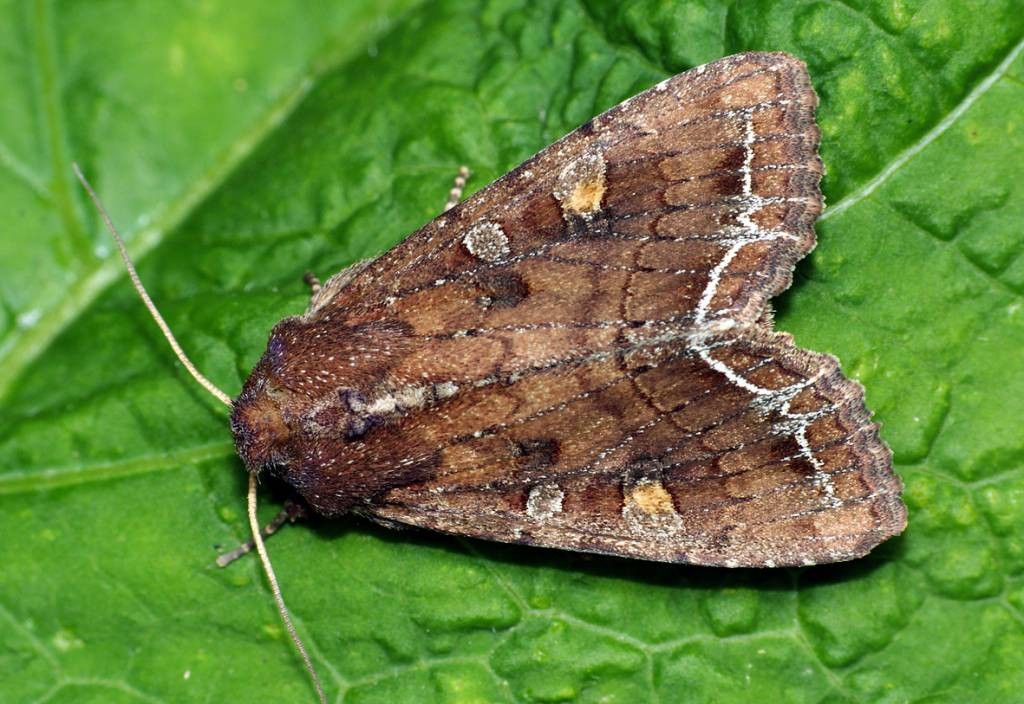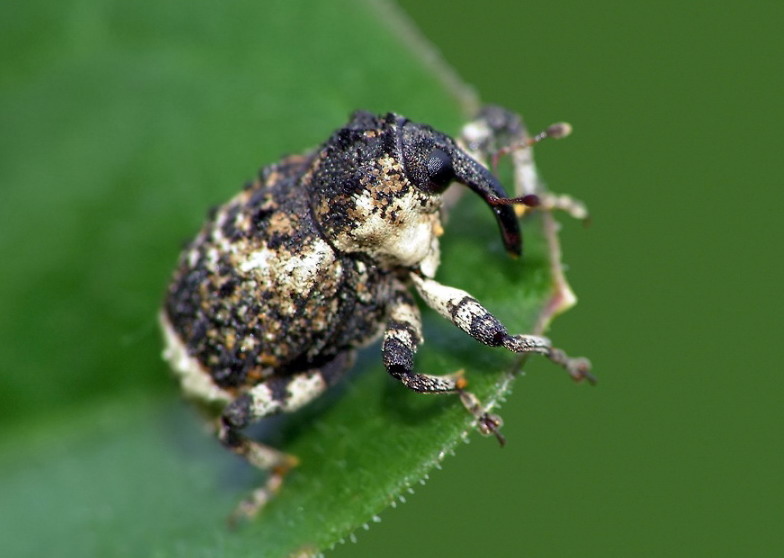Methods for protecting cabbage from pests
Content
Cruciferous flea
One of the most formidable pests for cabbage is the cruciferous flea. It affects not only this plant, but also many other species: radish, radish, etc. As pests of white cabbage, they are found almost everywhere. Therefore, the fight against them is relevant for many regions of our country.
These insects multiply very actively and quickly, as a result of which almost all seedlings of white cabbage can die in just a few days. Fighting them is the key to the successful survival of seedlings. The beetles hibernate in the soil and when spring comes, they begin to actively reproduce, parasitizing and feeding on agricultural plants. As a result of their vital activity, young leaves and the root collar of the plant are damaged. This further leads to the death of most of the crop.
You should deal with them as follows:
- processing white cabbage with wood ash, as well as spraying it with ash infusion. It is necessary to process the leaves at least three times with an interval of 4-5 days;
- excellent protection is obtained when plants are treated with a decoction of tomato tops. The broth is prepared from 4 kg of chopped fresh green tops (can be replaced with 2 kg of dry tops of tomatoes), which are soaked in 10 liters of water for 4 hours. After that, the resulting broth is boiled over low heat and cooled. Charmingly need to strain it. Before spraying, dilute in a 1: 1 ratio and add 40 g of soap per 10 l of the finished solution.
But these methods of struggle will be ineffective if you do not often visit the garden or summer cottage. Therefore, insecticides are of better quality control. These include Aktellik, Aktaru, Intavir, Bankol, etc. In addition, it is known that dog shampoo, diluted in a ratio of 2 caps to one bucket of water, is also quite effective against these insects.
Aphid
Cabbage aphids are a very common pest. These animals are formidable pests and many gardeners and gardeners encounter them while growing crops. The high danger of the pest lies in the fact that it serves as a carrier for over 20 different viruses. Therefore, its life activity can be complicated and unpredictable for cultivated plants.
Aphids are ubiquitous, but in subtropical climates, due to environmental conditions, they are extremely rare. All insect generations are dangerous to plants. The harmful activity of aphids is to suck out juices from white cabbage, which leads to its death. Plant protection from aphids includes the following agrotechnical methods:
- timely and complete weed control;
- strict observance of all the rules of agricultural technology during the cultivation of cabbage;
- deep digging of the soil;
- uprooting after harvesting all plant residues with their further burning;
- harrowing the soil in spring;
- autumn plowing;
- planting seedlings near dill, carrots and tomatoes. The smell of these plants scares off aphids.
In addition, there are biological methods of control - the treatment of cabbage with biological insecticides. It can be "Agravertin", "Aktofit" and "Akarin". The method of their use is indicated on the packages. Guided by the above methods of aphid control, you can avoid many problems when growing and ultimately get a high-quality and bountiful harvest.
Bedbugs
The cabbage bug is the same common pest in our gardens as the aphid. These insects are highly prolific and have an incomplete development cycle. Bed bug larvae can be found on the lower part of the leaf blade. After hatching, the larva turns into an adult - an imago. Breeding peaks in early summer in hot weather. Damage to white cabbage and other varieties is caused by all generations. Dealing with them is quite problematic, but possible.
Damage to plants is caused by insects piercing the leaves in order to suck out the plant sap. At the puncture sites, light spots are formed, leading to the development of various pathological processes. Insect protection consists in carrying out preventive measures:
- complete harvesting for the winter of all plant residues remaining after harvest;
- early planting of seedlings;
- removing weeds near cabbage varieties;
- growing seedlings near cultivated plants that repel bugs.
To scare off bedbugs, you can use naphthalene, which is mixed with ash and sand in a 1: 5 ratio. You can also use fluffy lime with creolin in a 20: 1 ratio. Some gardeners advise using tobacco, which is mixed with sand in a 1: 1 ratio, decoctions of potato tops or onion husks and chamomile. This treatment can be repeated after 15 days. In addition, the soap solution has proven itself well. To prepare it, dissolve 300 g of laundry soap in 10 liters of water.
In case of strong colonization of plants with bugs, one should resort to chemical preparations-insecticides: "Actellik", "Phosbecid" or "Belofos". Dissolve two ampoules of the product in 2 liters of water. Please note that you need to use the prepared solutions only fresh. If preventive measures are followed, more radical methods will not be needed.
Video “The Easiest Way to Protect Cabbage”
Leaf beetle
Another pest of white cabbage and other varieties of this plant is the cabbage leaf beetle-babanukha. This is a small bug, which, despite its size, causes severe damage to cultivated plants. Adults have the appearance of bugs with a greenish tint on the body and brown paws. Harm is caused by females gnawing into leaves and laying eggs in them.
It is necessary to deal with such insects as follows:
- autumn digging of beds;
- early planting of seedlings in the ground;
- protection through the removal of all post-harvest plant residues from the garden;
- timely and complete control of weeds;
- compliance with the rules of crop rotation for cabbage.
To prevent the appearance of these insects, cabbage is sprayed with 0.15% Aktellik solution, as well as Aktara insecticide. By adhering to these rules, you will save your garden from the invasion of leaf beetles.
Scoop
No less common pest for cabbage is the scoop butterfly. The cabbage scoop has two stages of development: the caterpillar and the butterfly itself. An adult can grow up to 5 cm in wings. Externally, the scoop is gray with bright white spots. In this case, the edges of the wings may have teeth, on which stripes of white or yellow-white color are applied. There are spurs on the front legs of the scoop moth parasitizing the cabbage. Using these traits, you can distinguish an insect from other types of butterflies that are safe for your crop. These are nocturnal insects that are attracted by cabbage with its nectar, sugar and color.The scoop can parasitize not only on various varieties of cabbage, but also on other plants of the cruciferous family. However, this is typical for almost all of the pests described above.
A distinctive feature of this insect is its very high fertility. Moreover, the number of possible generations is determined by weather conditions and habitat. So, in the northern regions of our country, the scoop can breed only one generation, but in the southern regions - up to three. The fight against the scoop should be started at the early stages of its development and appearance. This will allow you to achieve significant effectiveness of various methods of control and protect your crop with minimal effort.
The list of control measures in this situation includes the following operations:
- installation of pheromone traps. This is the simplest and most effective method of fighting. These traps should be hung from May to September. Using pheromone traps, you can effectively destroy pests at two stages of their development (both caterpillars and butterflies). Moreover, the destruction occurs without direct human participation, since butterflies appear only at night. Also, with the help of such traps, you can make a rough estimate of the population of these insects in the garden or vegetable garden;
- the use of insecticidal solutions. They should only be used when a large population has been identified.
The most effective drugs that are currently used to combat cabbage scoops are Dipel, Lepidocid, Zeta, Actellik, Fitoverm, Carbofox and others. In addition to these two main methods of control, additional preventive agricultural technologies can be used:
- autumn plowing;
- cultivation of aisles in the presence of mass pupation;
- complete and timely destruction of weeds, especially during their flowering period.
It will be useful to know that trichograms are among the biological enemies of cabbage scoops. They destroy ovipositor moths, thereby significantly reducing the number of mature individuals and the total population. As you can see, there are quite effective preventive methods and ways to combat these pests. Using them, you can completely destroy the population of scoops in your garden or backyard.
Stem Cabbage Lurker
Stem cabbage lurker is an ordinary and quite common cabbage pest in our gardens. It is a small beetle with a light spot on the scutellum. Its larvae are rather large, which makes them easy to detect on plants. They can be found in the veins of the leaves, as well as on the stems and the root collar. The hatched larvae look like maggots and can completely destroy the harvest of cabbage and other cruciferous plants within one month.
The main measures to combat these insects include the following preventive operations:
- keeping the land plot and vegetable garden clean from plant residues;
- timely harvesting of leaves from under trees and shrubs;
- frequent loosening of the soil between rows in the summer;
- if larvae are found, spraying the plants with special insecticides. But remember that this must be done no later than one month before harvest.
As you can see, cabbage has a large army of pests in the form of various types of insects. Timely application of preventive measures and pest control means will help you get a high-quality and plentiful harvest of cabbage in the fall without any problems.
Pest Control Video
The video provides detailed instructions on how to protect cabbage from pests and what to do to get a good harvest.

